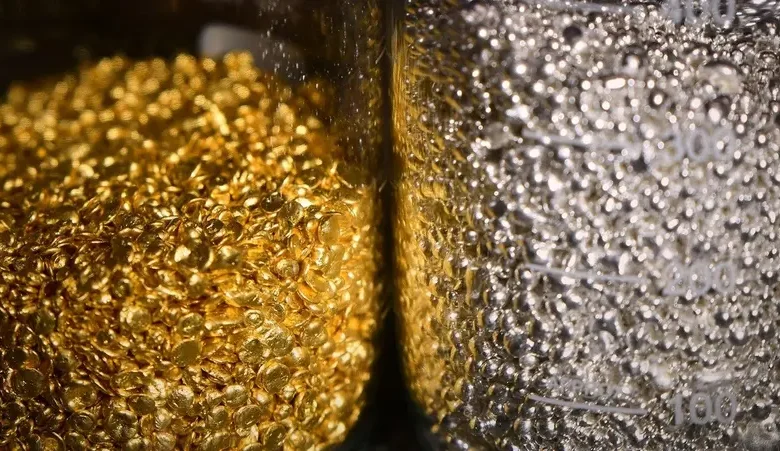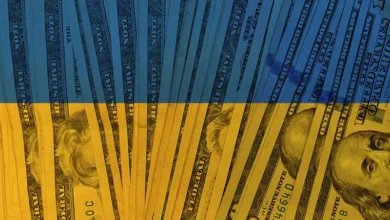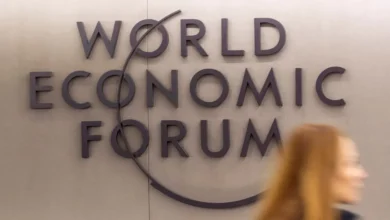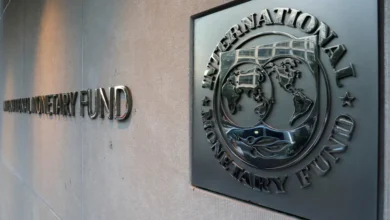All that glitters, isn’t always gold: Silver a niche for safe-haven investment

Gold investing has gained popularity in recent years due to the current economic climate, characterized by persistent inflation that has eroded the value of the US dollar and driven investors to seeking inflation-hedging assets such as commodities.
Global geopolitical instability has also influenced the economy, encouraging portfolio diversification.
However, gold is not the only precious metal that serves as a safe-haven investment option. Investors are considering platinum, palladium, copper, and silver as well.
Although less prestigious than gold, silver, in particular, offers potential benefits, making it a noteworthy alternative investment instrument. Long considered “poor man’s gold,” it is now emerging as a strategic investment tool, capturing investor attention.
Silver rallied past $31 per ounce last week amid surging investor interest and supply challenges.
On Tuesday, silver prices resumed their upward trading trajectory, breaking the $32 barrier after trading volumes in Chinese markets leaped overnight. The latest upswing has reinforced expectations of a continued bullish trend and caught the attention of investors and market analysts alike, who are now eyeing positive targets.
Market dynamics
“Silver’s unique status as a semi-industrial metal has proven advantageous, particularly in the past month,” head of Commodity Strategy at Saxo Bank, Ole Hansen, said. “While gold has been extending its gains to reach fresh record highs and copper has led the industrial metal sector higher, silver has carved its path.”
Despite its major role in industrial applications, silver’s investment appeal remains potent.
“Trading well below its $50 record from April 2011, silver presents itself as a compelling option for investors seeking exposure to the precious metals market. This aspect becomes particularly relevant as gold continues to scale new heights, making silver a comparatively more accessible choice,” Hansen said.
The current uptick in silver prices is driven by a combination of heightened demand and constrained supply.
Industrial demand, particularly from the electronics and renewable energy sectors, continues to grow.
Silver’s use in photovoltaic cells for solar energy, and in various electronic components has increased, pushing up its market value. On the supply side, mining disruptions have led to a tighter market.
“The surge in demand for copper, driven by the global shift towards electrification and concerns about supply constraints, propelled copper prices to unprecedented levels this month,” Hansen remarked, adding that “silver, echoing some of the same supply and demand dynamics as copper, finds itself bolstered by an additional layer of support.”
Silver recently breached the $30 mark, a level that had previously acted as a barrier on three separate occasions since 2020. This breakthrough sparked fresh buying interest among momentum-focused traders, underlining its resilience and potential for further gains, as Hansen noted.
Risks and benefits
Silver, renowned for its volatility in comparison to gold, has demonstrated this trait through its year-to-date gains of +32 percent, outpacing gold’s more modest increase of 13.5 percent. Although silver generally mirrors the direction of gold, its movements often occur at a notably faster pace, both upwards and downwards.
“One of the primary risks associated with silver is the potential for a shift in its technical or fundamental outlook,” Hansen said. “Such a change could trigger aggressive long liquidation from speculators, leading to a rapid decline in its prices. To counteract this risk, investors must deploy effective risk management strategies, setting predetermined thresholds below which, they are unwilling to witness silver’s decline.”
He also mentioned that monitoring directional cues from other metals, such as copper and gold, can provide valuable insights into the broader market sentiment and potential movements in silver prices.
In recent years, the silver market has exhibited a distinct pattern during periods of economic uncertainty and recovery.
“Despite initially trailing behind gold during periods of economic downturns, silver often outperforms the yellow metal as economies stabilize and recover,” market analyst and co-founder of Aksys Global Markets, Walid Abousleiman, said.
“For instance, during the 2008 global financial crisis and the 2020 coronavirus pandemic, gold outpaced silver. However, as economic conditions improved, silver experienced substantial gains, fueled by its higher volatility, typically ranging from 1.5 to 2 times that of gold, and its industrial applications.”
He advised investors to recognize that silver’s performance closely correlates with economic cycles and industrial activities.
Investment strategies
For novice investors looking to enter the silver market, analysts recommend several strategies.
“Investing in physical silver involves acquiring silver bars or coins. This approach offers the advantage of owning a tangible asset, providing a hedge against economic uncertainty and inflation,” Abousleiman explained.
“It, however, comes with its own set of challenges. Storing physical silver incurs costs, including storage fees and insurance. Moreover, liquidity can be an issue, particularly during periods of high demand when the physical market may experience significant premiums over spot prices.”
Alternatively, investors may choose to invest in silver ETFs (exchange-traded funds), which provide a more convenient route to silver exposure, without the need to handle physical bullion, according to Abousleiman.
“These funds typically track the price of silver and are easily tradable on stock exchanges. ETFs offer greater liquidity and lower storage costs compared to physical silver,” he explained, adding that investors, nonetheless, do not directly own the silver itself, and management fees may apply. Furthermore, during times of extreme market stress, ETF values may diverge from the spot price of silver.
Another avenue for silver investment is through mining stocks, which involve purchasing shares of companies engaged in silver extraction and production.
“Investing in mining stocks offers the potential for leveraged exposure to silver prices, as stock prices of mining companies can rise more than the price of silver itself during bull markets,” Abousleiman noted. “This approach, however, carries specific risks. Investors are exposed to operational risks associated with individual companies, regulatory issues, and broader equity market volatility.”
In line with the investment strategies outlined, Hansen suggests that novice investors consider investing in an ETF that tracks the performance of spot silver on a one-to-one basis.
Insights and outlooks
Given the current positive market indicators, many experts believe that silver remains an attractive option for those looking to capitalize on industrial growth.
“Gold has outperformed silver over the past five years, driven by several catalysts such as geopolitical tensions and substantial demand from central banks, particularly Chinese banks amid the real estate crisis,” Managing Principal at Tickmill, Joseph Dahrieh, said. “Also, the anticipated rate cut by Federal Reserve later this year is weakening yields and pushing commodity prices higher.”
“In contrast, silver has lagged behind other commodities. The main reason is that silver’s catalysts differ from those of gold. Over the past decade, silver has been predominantly used in manufacturing processes, which means it is not classified as a safe haven like gold. But with the rise of AI, silver is increasingly replacing other materials in the technology sector, particularly in motherboard manufacturing, biotechnology, healthcare, and consumer wearables,” Dahrieh explained.
He added: “The current hype in the technology sector, driving the NASDAQ higher with companies like Nvidia leading the charge, is one of the primary reasons behind the surge in silver prices. This trend is expected to continue as technology advances.”
Abousleiman echoed Dahrieh that the future outlook for silver is closely tied to its industrial demand and technological advancements.
“The growing emphasis on green technologies is expected to significantly drive demand for silver as countries strive to meet renewable energy targets, resulting in heightened interest in the metal,” Abousleiman said.
According to Dahrieh, the gold-to-silver ratio, an indicator that has fluctuated widely throughout history, is currently misaligned with the natural abundance of these metals.
“I believe the ratio should be 16:1, reflecting the fact that there are 16 times more silver in the Earth’s crust than gold. Applying this ratio to the current gold price of around $2,300 per ounce suggests that silver should be priced at $150 per ounce. Currently, silver is trading at about $32 an ounce, but I anticipate surpassing the 2011 high of $50 is inevitable. It’s only a matter of time before we witness that peak being exceeded.”










